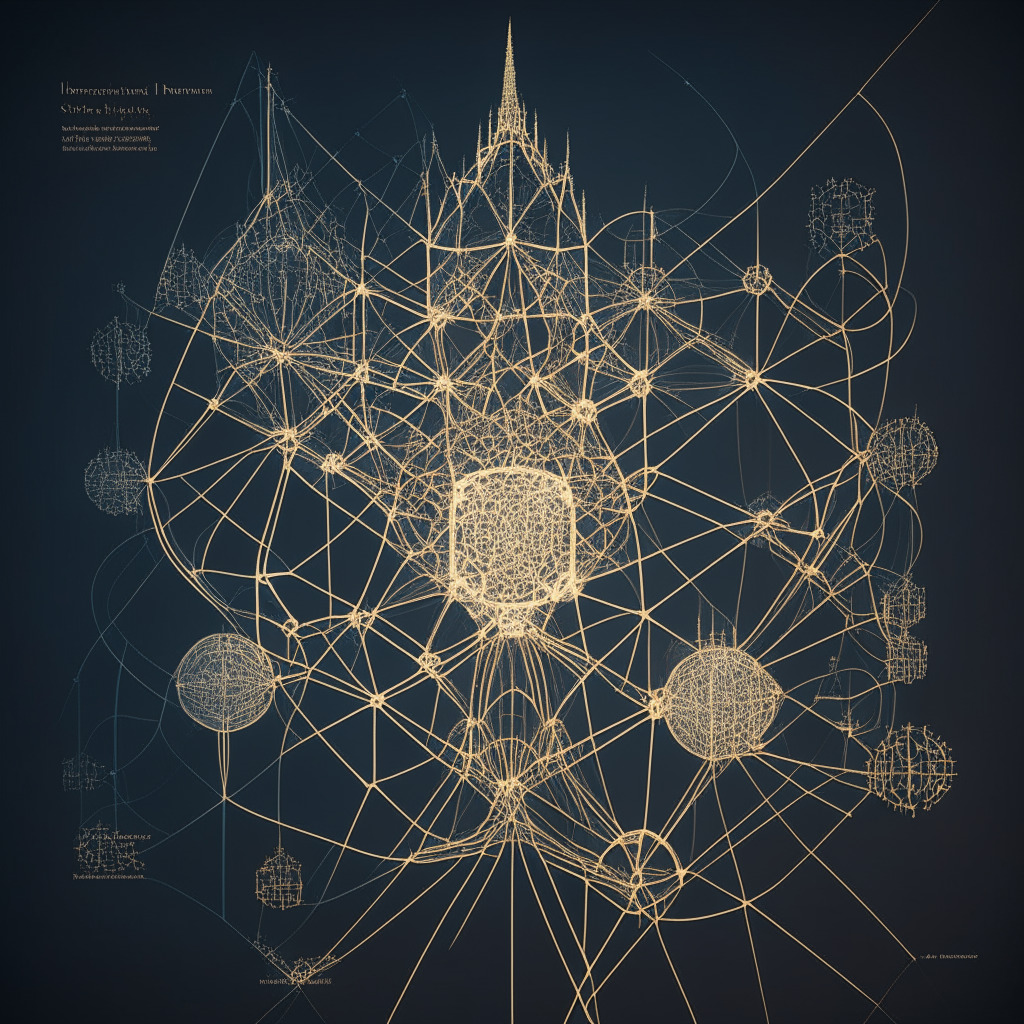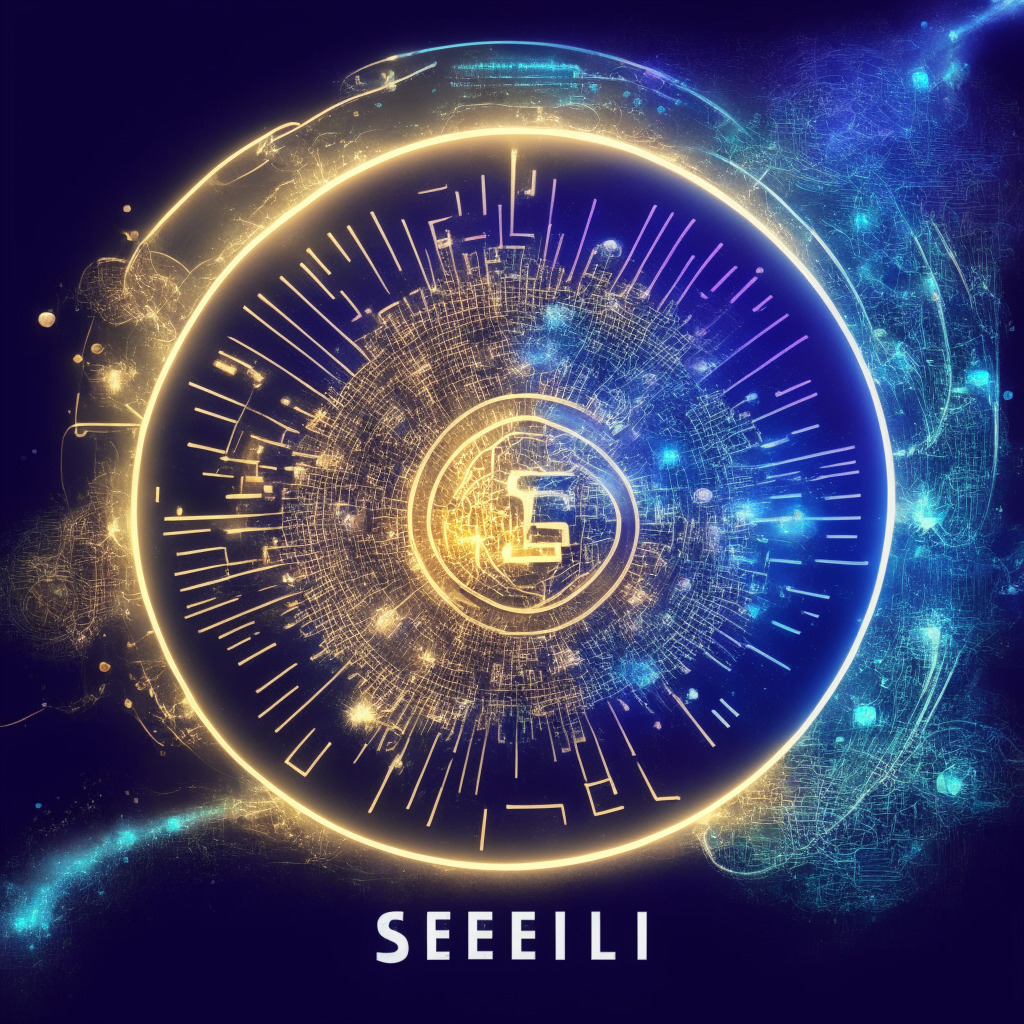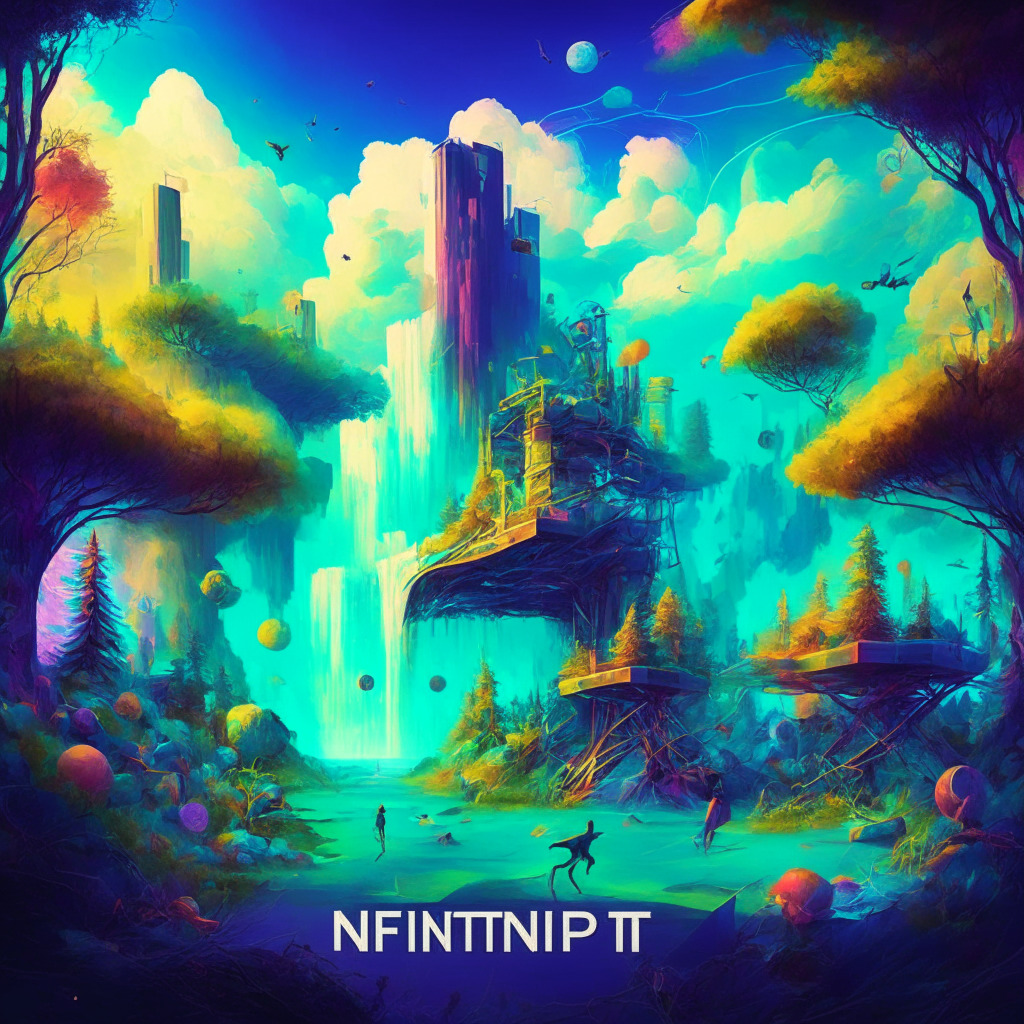The Optimism network has launched its testnet version of a fault-proof system aimed at increasing the efficiency and decentralization of the Superchain. Typically reliant on centralized sequencers, the new system offers modular options to prevent fraud. However, co-founder of Ethereum, Vitalik Buterin, asserts the importance of user-submitted fraud proofs to maintain true decentralization.
Search Results for: Optimism network
Optimism Network’s Major OP Tokens Private Sale: Economic Genius or Price Plunge Catalyst?
“Optimism Network plans to sell 116 million OP tokens via a private sale, expected to generate $160 million. The tokens are drawn from the unreserved portion of the OP token treasury and are subjected to a two-year lock-up period. This strategic approach aims at expanding Optimism’s market reach responsibly without affecting the token’s value.”
Crossing Bridges: USDC Expansion to Base & Optimism Networks – A Milestone or Misstep?
In a significant development, USD Coin (USDC) has expanded to Base and Optimism networks, allowing Coinbase and Circle account holders to directly transfer their USDC stablecoin to Base. However, the new native USDC struggles with full integration across networks, causing user confusion and scepticism. The future of this decentralized currency hinges on balancing innovation, competition, and user convenience.
Ethereum’s Optimism Network Upgrade: Creating a Superchain with Bedrock
The Optimism network recently implemented a significant upgrade called “Bedrock,” transforming Ethereum’s native token, ETH, into a native token alongside Optimism’s own OP token. This upgrade aims to create a “Superchain” of interoperable and composable blockchains, enhancing the capabilities of both layer 1 and layer 2 networks.
Ethereum’s Layer 2 Networks: Breakthroughs and Cautions in the Blockchain Sphere
“Ethereum’s integration of layer 2 networks marked a shift in industry practices, with auxilliary networks supporting developers and easing mainnet congestion. Base and Friend.tech, for instance, have seen significant growth. However, Messari’s analysts advise caution due to market uncertainties.”
Revitalizing Cryptocurrency Platforms: A Look at Celsius Network’s Restructuring Efforts
“Celsius Network, a crypto entity facing legal proceedings, aims to repay its customers by year-end with a blend of Ethereum and Bitcoin worth $2.03 billion and stock in an emerging offshoot company. A success would represent a rare instance of a failed crypto platform’s revival through a Chapter 11 bankruptcy case, pointing to groundbreaking possibilities in crypto’s future.”
Decentralized Social Network Friend.tech Surpasses Protocol Fees by ETH 11,000: A High Risk Success
Friend.tech, a decentralized social network built on Coinbase’s Base and linked to Twitter, is gaining traction with almost ETH 11,000 in protocol fees. It currently ranks third in 24-hour fees, surpassing established platforms like OpenSea, Tron, and layer-1 & layer-2 giants such as Uniswap, Bitcoin, and MetaMask.
Leap into Blockchain Future: Chainlink Incorporates CCIP into Coinbase Layer 2 Network
Blockchain oracle network, Chainlink, has integrated its Cross-Chain Interoperability Protocol (CCIP) into the Coinbase layer 2 network, Base, enabling developers to create web3 products and launch transactions across different networks. This step advances the adoption of innovative crypto products, as Chainlink’s move towards cross-chain lending expands. However, the challenge of potential centralization criticism remains.
How Mixin Network’s $20 million Bounty on its Own Breach Shapes Crypto Security Future
After losing $200 million in digital assets to a cybercrime exploit, Hong Kong-based Mixin Network is offering a $20 million bug bounty to the perpetrator. The company swiftly disabled user services after the breach, before working on resolving detected vulnerabilities to uphold user security and platform integrity. Mixin Network’s ability to handle this event highlights the significance of firm-level security in the unregulated world of cryptocurrencies.
Optimism Navigates Through Financial Headwinds Ahead of Major Token Unlock
“Ethereum layer 2 network, Optimism, faces a financial downturn as its token, OP has dropped almost 10% in the run-up to its planned token unlock on September 30. This downward trajectory in prices reflects the increased supply’s impact on asset value.”
Impending Token Unlock for Optimism: A Balance of Growth and Uncertainty
The Ethereum layer 2 network, Optimism, anticipates a token unlock on September 30, posing some uncertainty for its native token. This unlock involves unwrapping 24.16 million tokens (around $31.1 million), representing a 3% sliver of total circulating supply. Preluding the unlock, Optimism announces a release of 570 million tokens for future airdrops, with allocations based on community participation and governance votes.
The Rain of Tokens: How Optimism’s 3rd Airdrop Fosters Blockchain Community Participation
“Layer 2 network Optimism launched a third airdrop of OP tokens, distributing 19.4 million tokens to over 31,000 wallets. The airdrop aimed to boost community involvement in the Optimism Collective’s delegation activity and to encourage users to vote in governance.”
Surging Success of Coinbase’s DeFi Network Base: A Flash in the Pan or Future Heavyweight?
Coinbase’s layer-2 network, Base, has surpassed Solana in total value locked (TVL), with a significant 97.21% surge. This increase is majorly driven by decentralized exchange Aerodrome Finance and decentralized social media app Friend.tech. With legislative changes and regulatory scrutiny in play, Base’s future prominence in the crypto world remains uncertain.
Bridging Crypto and Traditional Finance: Ramp Network’s Adoption of Brazil’s Pix System
Ramp Network, a start-up providing payment infrastructure, adopted the Pix payment system of the Brazilian Central Bank fostering its penetration into South America. This integration not only increases accessibility to cryptocurrencies but also ignites market volatility concerns due to regulatory uncertainties.
Circle’s Stablecoin USDC Set to Launch on the Base Network: A Leap Forward or a Leap of Faith?
Circle’s CEO Jeremy Allaire recently announced a significant shift for the company’s U.S. dollar-pegged stablecoin, USDC, which will now launch natively on the Base network. This aims to gradually reduce the need for a bridged coin backed by the Ethereum variant. Despite the development, underlying trust issues remain, emphasising the stability of the Base network and potential issues resulting from reliance on bridged tokens.
Ethereum’s Lower Network Activity: A Sign of Successful Scaling Solutions?
Ethereum’s gas fees have hit an 8-month low due to low network activity, yet layer-2 scaling solution popularity is on the rise. This indicates the vital role of scaling solutions in maintaining low fees even amidst growing decentralization. Notably, Ethereum 2.0 and layer-2 solutions seem to alleviate the issue of high adoption against expensive gas fees and slow transaction times. Ethereum’s evolving technology is making it increasingly invincible, even against rival blockchain platforms.
Blockchain Opportunities and Threats: Multichain Hack, Base-Optimism Collaboration and Shibarium’s Relaunch
Amid a $1.5 billion Multichain hack investigation and potential seizure of Multichain funds, Base and Optimism networks are expanding blockchain’s reach with initiatives in governance and revenue-sharing. Simultaneously, Quantstamp unveils a service to detect flash loan attack vulnerabilities, forwarding blockchain security.
1inch Joins Coinbase’s Ethereum Layer 2: The Progress, Promise and Pitfalls of Base Network
Decentralized exchange aggregator 1inch has partnered with Coinbase’s Ethereum Layer 2 network Base, aiming to leverage liquidity from 15 functioning decentralized exchanges. The agreement introduces 1inch’s limit order protocol, contrasting from standard instant price conversions, and integrating Base within robust Layer 2 networks like Optimism, Arbitrum, and zkSync Era. Despite impressive growth and transaction rates, Base faces challenges with a high proportion of meme coin activity, suggesting potential volatility.
Decoding Ethereum Layer-2 Networks: Coinbase’s Pivot, Shibarium’s Revamp, and Solana’s Resurgence
The blockchain realm witnesses escalating discussions about secondary “layer-2” networks built atop Ethereum using “zero-knowledge” cryptography. Meanwhile, Coinbase pioneers blockchain education by operating its own blockchain, Shibarium aims to resolve network issues, and Solana recovers after significant setbacks while Terra falls victim to hackers.
Shibarium Stumbles: The Trials, Triumphs, and Tough Lessons in Launching a Blockchain Network
“The Shibarium network of Shiba Inu recently faced a significant setback when an unforeseen user transaction surge led to transactions stalling for 11 hours post-launch. Despite initial hiccups, developers hope for successful reopening, utilizing new monitoring systems, auto server resets, and rate limiting to manage future traffic surges.”
Shibarium Network’s Rocky Launch – A Setback for Shiba Inu’s Blockchain Ambitions
“The Shibarium network, highly anticipated by Shiba Inu token holders, faced significant technical issues upon launch, causing a halt in transactions and a dip in SHIB’s value. This has raised concerns about blockchain vulnerabilities, particularly as Shibarium was part of a larger strategy to elevate Shiba Inu from a “meme coin” to a serious blockchain contender.”
Assessing the Potential of Sei Network’s Native Token: A Deep Dive into Its Prospects and Challenges
“The Sei Network’s native token, SEI, made a grand entry with a $1.8 billion fully diluted valuation. Amid market enthusiasm, potential investors are keeping an eye on SEI’s performance. The transaction speed, scalability, and utility of SEI tokens on various platforms could determine its future valuation. Cryptocurrencies like SEI play a significant role in digital economies, and market watchers eagerly await its impact on the dynamic digital paradigm.”
Coinbase’s New Wave: Base Network and the Debate on Blockchain Adoption Necessity
Coinbase’s layer-2 blockchain network, Base, has seen a remarkable increase in users since its launch, with 30% reportedly being newcomers to blockchain. Despite skepticism, Base presents a promising conduit for users into Web3 protocols because of Coinbase’s huge user base. The readiness of such networks may pose risks to new adopters due to their inherent complexity and potential risks. The necessity of digital currencies is called into question, particularly in regions with a well-established banking system.
Unlocking the Future: Optimism’s Beam Wallet Redefines Crypto Transactions
“Step into the future with blockchain-based Beam wallet. This innovative application uses Twitter for login, eliminating the need to store seed words. Backed by top Web3 venture capitals, it aims to enhance user experience, increase adoption rate and ensure security by not landing passwords on a centralized server.”
Sui Network’s Struggle and Rise of $EVILPEPE: Analyzing Crypto Market Dynamics
“Sui Network, a rising contender to Solana, faces repeated downward price shifts, the most recent a -2.1% drop. Despite hints at possible positive movement, the bearish trend gives it a precarious risk-reward profile. In contrast, $EVILPEPE Coin, from creators of Thug Life Token and SpongeBob, shows promising growth prospects, ignited by social media and influencer promotion. However, the volatile crypto market calls for informed caution.”
Navigating Short-Term Turbulence vs Long-Term Optimism in the Bitcoin Market
Despite Bitcoin’s unpredictable short-term price action, its role as a global asset class is solid. Concerns arises whether selling pressures from Bitcoin miners destabilize the market and shake investor confidence. Regulatory scrutiny can disrupt market dynamics contributing to greater price volatility, yet long-term confidence in Bitcoin remains strong.
Manta Network’s Record-breaking Valuation: Revolutionizing DeFi Through Privacy and Anonymity
“Manta Network, backed by P0x, has reached a valuation of $500M after a recent funding round. This funding aims to boost scalability and user base, and increase overall utility. P0x revealed plans to launch Manta Pacific, featuring decentralized applications (dApps) enabled by zero-knowledge (ZK) technology, enhancing privacy and security in the DeFi community.”
Binance’s Integration of Bitcoin Lightning Network: A Forward Leap or Cause for Concern?
Binance has successfully integrated the Bitcoin Lightning Network, a secondary layer solution addressing scalability, for faster, cheaper transactions. Despite recent transaction backlogs, technical issues, and rumors about layoffs, this development adds a new layer of user security, sparking optimism among crypto enthusiasts.
Revolutionizing Funding through OP Stack’s Public Goods Network: Innovation or Setback?
The Public Goods Network is an Optimistic layer-2 rollup of Ethereum, designed to redirect most net sequencer fees into public goods projects, rather than to token holders or developers. This model could, however, raise concerns about potential misuse of funds, lack of transparency, and biases, especially given reliance on a yet-to-be-defined new governance model.
Navigating the New Digital Frontier: Versal Network & the Future of Cross-Border Crypto Transactions
“Six Clovers, a crypto payment systems developer, recently launched the Versal Network on the Sui blockchain to enable cross-border transactions for businesses. This innovative network aims to merge traditional e-commerce with the emerging Web3 commerce and paves the way for businesses to transact via stablecoins and Central Bank Digital Currencies.”
Optimism for Ripple as SEC Argument Weakens: Major Events in July and Potential XRP Price Jump
Ripple CEO and chief legal officer express optimism for a favorable summary judgment, as the US SEC’s argument weakens. The US House Financial Service Committee plans to introduce a stablecoin bill, potentially giving the US SEC and CFTC individual control over the crypto market.
Zora Network Revolutionizes NFT Landscape: Pros, Cons, and Main Conflicts
The Zora Network, focused on revolutionizing the NFT landscape, introduces its layer 2 blockchain network for faster, cheaper, and environmentally friendly minting processes. Built on Optimism’s tech stack and secured by Ethereum, Zora’s platform already endorses over 35 groups, attracts over 100,000 monthly users, and has raised $60 million in investments.































